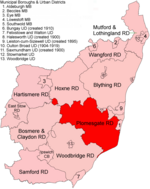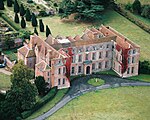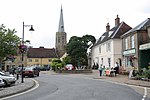Campsea Ashe

Campsea Ashe (sometimes spelt Campsey Ash) is a village in Suffolk, England located approximately 5 miles (8 km) north east of Woodbridge and 6 miles (10 km) south west of Saxmundham. The village is served by Wickham Market railway station on the Ipswich-Lowestoft East Suffolk Line. The modern village covers two medieval villages, Campesia and Esce. The former was the site of an Augustinian nunnery Campsey Priory, suppressed in 1536, of which only the Mill and Mill house still exist as Grade II* listed buildings.The Campsea church of St John the Baptist dates from the 14th century, and survives as the local parish church. It is a grade II* listed building.Campsea has an Auction Room, dating to the 1920s, with a weekly auction held on Mondays.
Excerpt from the Wikipedia article Campsea Ashe (License: CC BY-SA 3.0, Authors, Images).Campsea Ashe
B1078, East Suffolk Campsea Ashe
Geographical coordinates (GPS) Address Website Nearby Places Show on map
Geographical coordinates (GPS)
| Latitude | Longitude |
|---|---|
| N 52.153 ° | E 1.406 ° |
Address
Allonsfield House Care Home
B1078
IP13 0QQ East Suffolk, Campsea Ashe
England, United Kingdom
Open on Google Maps










